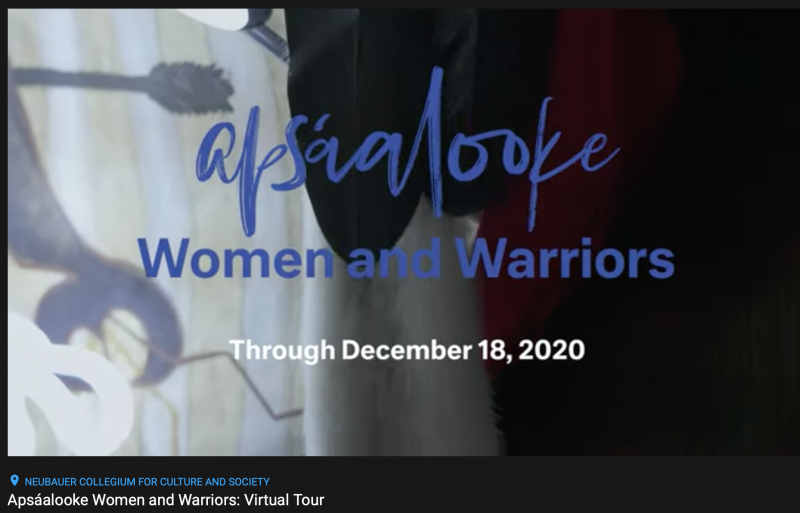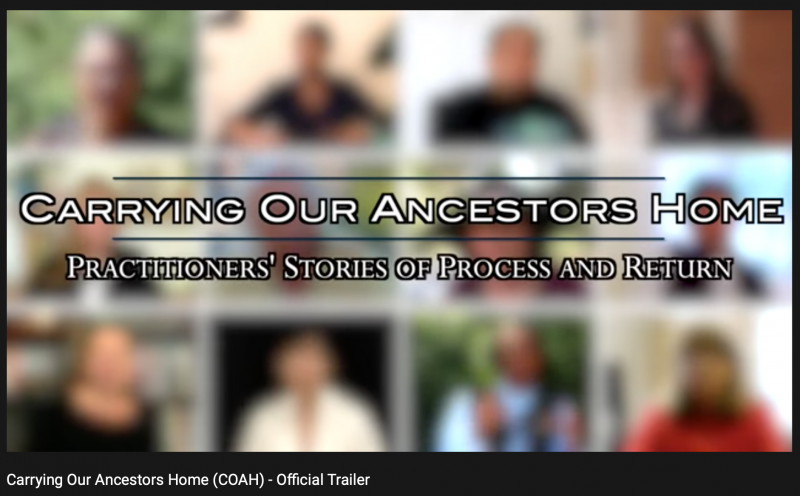Salvaged: The Hearst Museum, Colonialism, and Caring for the Past
This is the landing page for a digital exhibition curated by the students of UC Berkeley’s Spring 2021 History of Art 192CU: Social Justice and Museum Studies. In the pursuit of exploring Cal’s proximity to global colonialism through the lens of the Hearst Museum, we have researched a range of subjects, from the impact of colonialism on the landscape of the Philippines to contemporary artists who push back on salvage anthropology.
Content Warning: Some of the subjects included in this space are graphic and difficult to read, especially concerning the history of colonialism in California and the Philippines.
Land Acknowledgement
The University of California, Berkeley and the Phoebe A. Hearst Museum of Anthropology occupy the territory of xučyun (Huichin), the ancestral and unceded land of the Chochenyo speaking Ohlone people, the successors of the historic and sovereign Verona Band of Alameda County. This land was and continues to be of great importance to the Muwekma Ohlone Tribe and other familial descendants of the Verona Band. Every member of the UC Berkeley community has benefitted and continues to benefit from the use and occupation of this land, since the institution’s founding in 1868. We have a responsibility to acknowledge and make visible UC Berkeley’s relationship to Native peoples.
This statement was adapted from versions from the Native American Student Development Center (NASD) and this report on Native American collections at UC Berkeley. You can also learn more at the official website of the Muwekma Ohlone Tribe.
Salvage Anthropology
During the late nineteenth century, many of the founders of Western anthropology operated under an ideology subsequently termed salvage anthropology/ethnography. These academics wrongly believed Indigenous people were destined for extinction. In the face of European and US colonization and state-sponsored violence, these anthropologists believed cultures had to be “salvaged” for use by academia. These anthropologists built their careers (and, in many ways, the field itself) by attempting to “stop time” in their research on Indigenous Californians, generally measuring “culture” by what they thought Native practices were before European contact.
Alfred Kroeber was a founding figure of Berkeley’s Anthropology department. His relationship to a Yahi man known as Ishi is a core example of this “salvage” ideology. Ishi was cornered by dogs in northern California, and widely publicized as the last survivor of the Yahi people who had been terrorized by white settlers. Ishi was employed by the museum in a kind of indentured servitude to create cultural objects such as hunting tools for white museum visitors. This dynamic has been criticized as a ‘human zoo,’ as Ishi was himself a part of the display about Indigenous Californians. The treatment of Ishi as if he was ‘frozen in time’ as the ‘last wild Indian,’ while he was living and working in a modern museum also exemplifies salvage ethnography. To learn more about his work with Kroeber, visit the Ishi page on the Hearst website.
Berkeley anthropologists didn’t see themselves as practicing salvage anthropology. Instead, many thought of their work as preserving a culture that would otherwise be lost. Ultimately, the museum space was created with white audiences in mind. Indigenous methods of preserving culture were broken when anthropologists claimed important objects. Indigenous people, often economically devastated and recovering from genocidal violence, sold items to anthropologists to survive. Today the unequal power dynamics in these exchanges are obvious.
In addition to cultural objects, university officials encouraged staff and private individuals to collect human remains from Indigenous sites. Most of the ancestors held in the collection today come from shellmounds. These are burial sites and places for prayer and ceremony for multiple Indigenous groups in the Bay Area. From the beginnings of development to the present day, settlers disrupt these cultural sites with excavation and development of structures. Collection and donation to the museum was encouraged even when private individuals desecrated these sites. Today, thousands of ancestors are stored in the Hearst.
Anthropologists preserved objects, but they were also trapping them within the confines of the museum space. When we see the phrases used to describe collected items in the Hearst, we learn a lot about the ways in which anthropologists valued and value culture. The Hearst Museum Portal allows us to search for artifacts using key terms. When we search using the phrase ‘primitive,’ it provides us with completely different results than when we search using the phrase ‘beautiful’.

Search results on the Hearst Museum Portal when the key word provided is ‘primitive’.
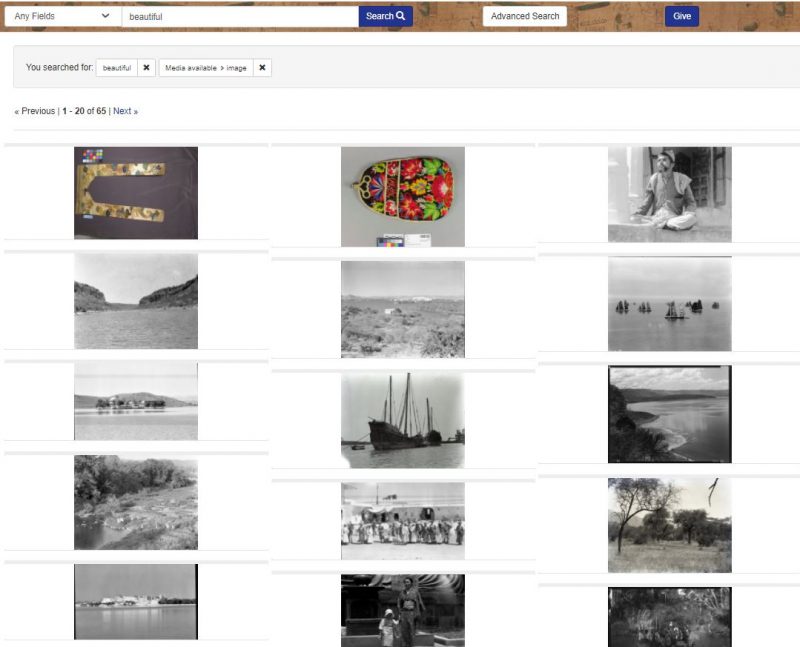
Search results on the Hearst Museum Portal when the key word entered is ‘beautiful’.
In practice, art isn’t arrested in time within a museum. It’s constantly evolving and adapting. To learn more about this perspective and how it is being challenged in the present day, explore the project Pushing back against Salvage Anthropology: In Conversation. Here, students interview L. Frank (a Tongva-Ajachmem artist and thinker) and Peter Morin (a Tahlan Nation artist and professor) to learn more about how they interact with museum spaces in contemporary times.
Berkeley's Colonial History - Then and Now
Like many institutions in the United States, the University of California was only made possible through the removal of Native people from their homelands. The University of California is a land grant university, meaning its initial funding came from The Morrill Act of 1862. This gave land to the University when it was formed in 1868, which it could lease, sell, or occupy. For example, acres of Ishi and the Yahi tribe’s traditional homeland near Oroville, California, were sold to fund the university at the same time Ishi was fleeing from violent white settlers. Sales like these began the UC and covered up to a third of expenses at the end of the nineteenth century. While this included land seized from all over California, the campus itself occupies the ancestral and unceded land of the Chochenyo speaking Ohlone people, the successors of the historic and sovereign Verona Band of Alameda County. Unceded means that the land didn’t change hands due to a treaty. Campus itself includes the site of a former Ohlone settlement. To learn more about Berkeley’s history relating to land grants, including how the UC continues to benefit from this dynamic, view the recorded event UC Land Grab.
The University of California was formed in the context of state violence, settler massacres, and repression of Indigenous people via Indian boarding schools. Settler colonialism caused systemic displacement of Indigenous people from the beginnings of Spanish colonization. The mission system, for example, exploited Indigenous labor, spread disease, and used violent repression to control Native Californians. The first Governor of California, Peter Burnett, declared in 1851 “A war of extermination will continue to be waged… until the Indian race becomes extinct.” Militia massacres of Native Californians were funded by the state of California, and Indian enslavement was legalized, funding the coffers of settlers. In addition to funds generated from land sales, private individuals with fortunes created through the dispossession of Native Californians gave money to the UC to help it get its start.
In 2019, California Governor Gavin Newsom said “It’s called genocide. That’s what it was, a genocide. No other way to describe it. And that’s the way it needs to be described in the history books.”
Anthropological practices from the Hearst’s founding encouraged digging up human remains. Settlers could conceptualize Indigenous graves as part of a culture that was no longer around, and thus incorporated bodies in the collection. To understand the weight of these actions, we must understand that this includes people who have living descendants. Think of it like this — if a university constructed an archeological dig on the graveyard your grandfather is buried in, you would likely understand it as a human rights violation. If this university was also complicit in the genocide of your friends and neighbors, you would understand it as an atrocity. Frantic collecting created one of the largest collections of human remains in the United States, something the Hearst is contending with today.
After the passage of the Native American Graves Protection and Repatriation Act in 1990, federal law forced the University to appraise its collection to find what they were required to give back. Berkeley reported over 80% of the human remains as ‘culturally unidentifiable,’ meaning they could not be tied to any contemporary, federally-recognized Native American tribe. California tribes and their allies continue to protest UC policies, advocate for cultural affiliation, and work to bring their ancestors home. In 2020, UC President Janet Napolitano issued a new system-wide policy that committed the University to repatriating human remains and cultural items in a far more timely and respectful manner than in the past. In 2021, the Hearst holds one of the largest collections of human remains in the country: out of the UC system, Berkeley, the oldest campus, has repatriated the smallest percentage of its collection.
This kind of colonial legacy is not easy to shake. Today, structures within the Hearst continue to enforce colonialism. The report titled “Native American collections in archives, libraries, and museums at the University of California, Berkeley” included some ways in which functionally, the University continues to erase Native Americans. It also included ten recommendations, steps that could change the future, and create real connections between the University and the people who have historically cared for the land the University is now on. Repatriation, improving conditions for Native American students, and improving relationships with tribes are essential for moving forward as a university. To learn more about how the Hearst can change, see the conclusion titled Opportunities and Futures.
Notes on Decolonization
When discussing the modern museum space, the term “decolonization” often comes up to describe attempts to undo the colonial harm that museum spaces have and continue to perpetrate. However, because so many qualities of museum spaces and their collections remain entrenched in contentious and damaging colonial practices, many argue that it is impossible to “decolonize” them. Rather than seeking to define the term or assert that it is or isn’t possible to “decolonize” the colonial institution of the museum space, this section provides a brief introduction to current discourse about the notion of “decolonization” in hopes that readers may more confidently approach this subject.
Before this discussion can begin, though, it is necessary to understand that the museum—the institution itself—was and remains a force of colonization. The museum is a colonial institution. The Western notion of the museum, specifically, anthropological museums like the British Museum or the Hearst, are deeply intertwined with the history of global colonization. As anthropologist Dan Hicks argues his 2020 book The Brutish Museums “as the border is to the nation state so the museum is to empire.” Museums served colonizing nations like Britain, France, Spain, and the US by acting as storehouses and storytellers for empire, narrating cultural objects in ways that often efface violence.
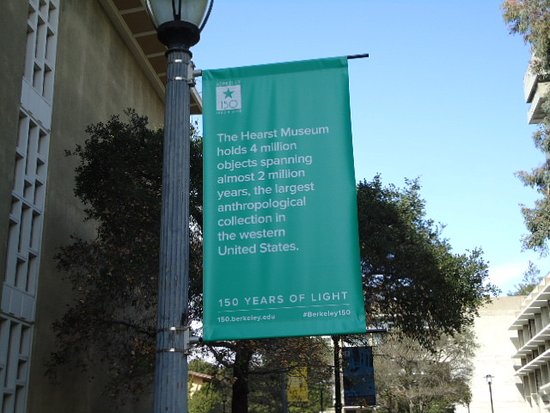
It is difficult to conceptualize the vast quantity of the objects that are held by the Hearst Museum of Anthropology and all of the cultures, peoples, and places that they relate to. (image source)
Often, “decolonization” is posed as a set of processes rather than an all-encompassing term that defines a practice. This means that decolonization looks different depending on the circumstances; for museums, this set of processes includes radical change that centers on moving away from white-washed narratives of history and ultimately to the restitution of cultural goods stolen or collected from colonized regions. Hicks writes that decolonization “cannot be short-circuited by the mere re-writing of labels or shuffling around of stolen objects in new displays that re-tell the history of empire.” As Hicks explains, cultural objects like the violently looted Benin Bronzes were never meant to be held in a space like a museum, where “the silence and stillness” of the space are unnatural, artificially-constructed conditions for these objects. For Hicks, decolonization comes as restitution; for colonial violence is always present, repeating in the gallery along with stolen objects.
Amy Lonetree, in her 2012 book, Decolonizing Museums: Representing Native America in National and Tribal Museums, asks readers: “How can we begin to decolonize a very Western institution that has been so intimately linked to the colonization process?” Lonetree argues that in pursuing decolonization, a museum must aid Native “communities in addressing the legacies of historical unresolved grief,” as well as speaking “the hard truths of colonialism and thereby creating spaces for healing and understanding.” This historical unresolved grief, or “‘the impaired or delayed mourning’ that occurs as a result of the many traumas that Indigenous people have suffered,” is what Lonetree argues must be addressed and undone.
“A decolonizing museum practice must be in the service of speaking the hard truths of colonialism. The purpose is to generate the critical awareness that is necessary to heal from historical unresolved grief on all the levels and in all the ways that it continues to harm Native people today.” – Amy Lonetree, Decolonizing Museums: Representing Native America in National and Tribal Museums
Decolonization is an imperfect term and practice, though. UC Berkeley recently completed the process of “unnaming” Kroeber Hall, a building on campus named after anthropologist Alfred Kroeber. While important, this act can feel reminiscent of Hicks’ assertion that decolonization “cannot be short-circuited by the mere re-writing of labels.” As one student notes:
“it’s a good first step, but there needs to be real action…the campus needs to commit resources to righting these wrongs and to think about the legacy of UC’s land and where it came from.” (Ataya Cesspooch quoted by Daily Cal)
When speaking about colonial institutions, like universities and museums, it becomes difficult to conceptualize how they might even be able to fully “decolonize” — begging the question of whether these entities must be completely demolished in order to actually address the harm they perpetrate. Political theorist Ariella Aïsha Azoulay argues that “it is not possible to decolonize the museum without decolonizing the world.” While efforts to “decolonize” are important, she contends that the museum cannot be decolonized because it is “not about hiring an individual curator from Congo or Nigeria, but about opening the imperial borders and letting people re-build their worlds in proximity to their objects” (Azoulay). The museum is not a discrete institution—no, it is a part of the world that exists as a form of, and in interaction with, colonization both in the past and now. To believe that it can be fully decolonized, as Azoulay argues, is to believe in something that is simply not possible.
Further in critique of the notion of “decolonization,” many argue that museums are systematic “sites of forgetfulness and fantasy” where “collections are an enjoyable diversion, a nostalgic visit which conjures up a romanticised version of Empire” (Kassim). Researcher Sumaya Kassim contends that “exhibitions are constructed usually assum[ing] a white audience and privileg[ing] the white gaze”—thus, museums are inextricably white spaces that are both deeply entrenched and active participants in colonization. To conceive of a decolonized museum is to conceive of something that is no longer a museum.
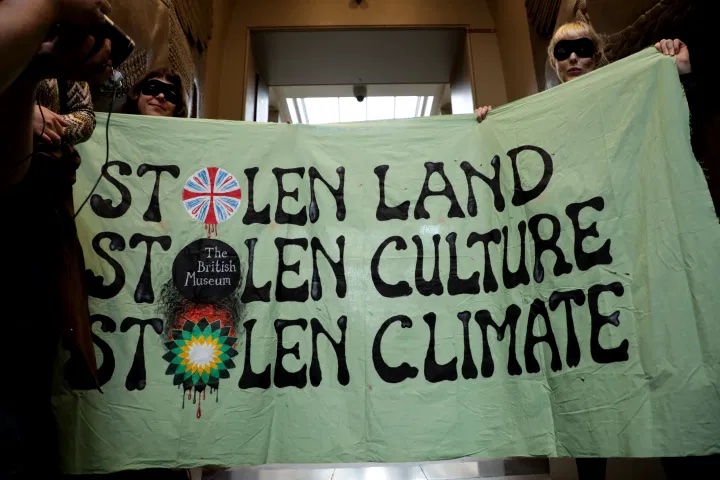
Protesters at the British Museum in May of 2019. (image source)
Foluke Ifejola Adebisi, a professor at the University of Bristol, builds on this, writing that “we cannot decolonise while relying on colonial logics of commodification of labour and space” (Adebisi). While we exist in a “post-colonial” world that relies on the tenets of colonialism, decolonization cannot be done. Adebisi connects the discussion of decolonizing individual institutions to movements for radical global decolonization as we face climate change and the sixth mass extinction event that will be experienced most greatly by the Global South. As she explains, “we cannot decolonise the university using the same logics that made it a colonising force,” imploring instead that we must “must make [decolonization] … possible” beyond the means of colonial structures and in centering the voices of colonized people.
“How illogical is it that the structure we are attempting to decolonise is the structure we are attempting to use to decolonise?” — Foluke Ifejola Adebisi
Perhaps one of the most important aspects of considering “decolonization” is recognizing the place where these efforts derive. As Hicks argues, it cannot be done just for the sake of “decoloniality to be claimed as yet another great…accomplishment” of the colonizing force. While this should not mean that the burden of “decolonizing” is placed on Indigenous or colonized peoples, it does mean that these efforts must actively support and center the desires and voices of Indigenous and colonized peoples. Whether or not this is possible in colonial institutions like museums remains in debate.
Many UC Berkeley students have brought “decolonization” to campus. Some examples include:
- Two DeCal courses – “Decolonizing Bodies in Public Health” (Fall 2021) & “Art History and Questions of Decolonization” (Spring 2021)
- The Berkeley Food Institute’s “Decolonizing Foodways” event
- The Berkeley Student Gardens decolonization initiatives
- The Student Environmental Resource Center program, “Decolonize the Environment”
- Working groups for the decolonization of museums in the Center for Race and Gender & the Townsend Center for the Humanities
Collecting and the Hearst’s Sense of Self
Can we view the objects that held by the Hearst Museum of Anthropology apart from the language that is used to describe them? Highlighting excerpts of catalogue entries, annual reports, newsletters, and more, we ask what it means when the words used to describe a museum’s collection become part of that collection.
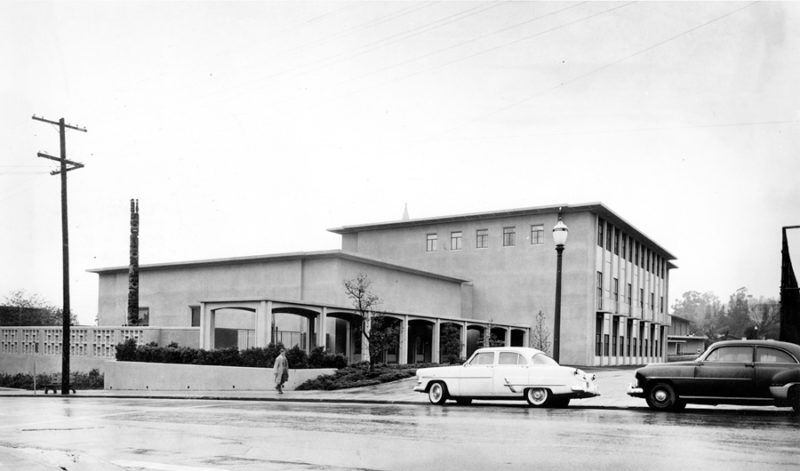
Care & Resistance: A Case Study on the Philippine Revolution from Spanish to American Colonization
What does care look like within colonial spaces? By examining photographs taken by anthropologist Roy Franklin Barton, this exhibit explores the relationship between care and resistance in the Philippines during Spanish and American occupation. Depictions of war, anarchy, and community challenge the monolithic narrative of the Pilipino people as passive participants to colonization, and instead present them as active resistors.
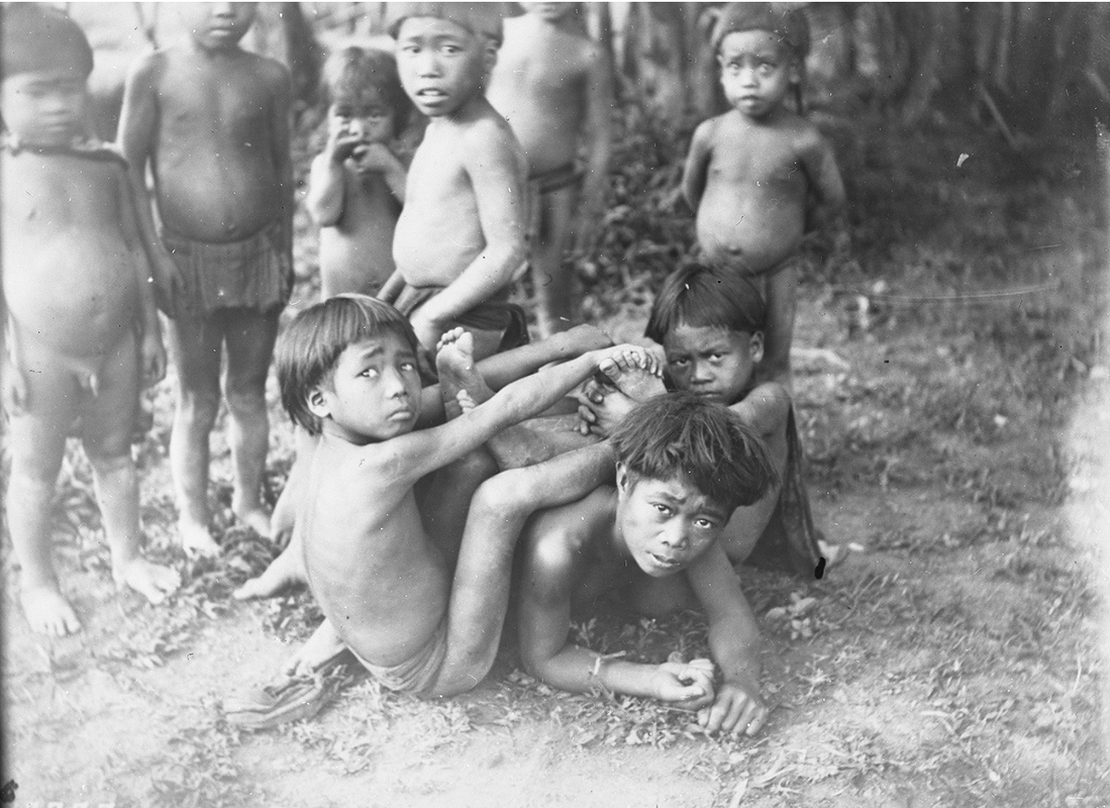
Pushing Back Against Salvage Anthropology: In Conversation
At its inception, anthropology and its practitioners were concerned with “salvaging” Native cultures that they believed would go extinct upon contact with “modernity”. Only pre-contact practices were considered authentic, ignoring the ongoing existence of Native groups in favor of an ahistorical narrative of erasure. We converse with contemporary creators who push back.
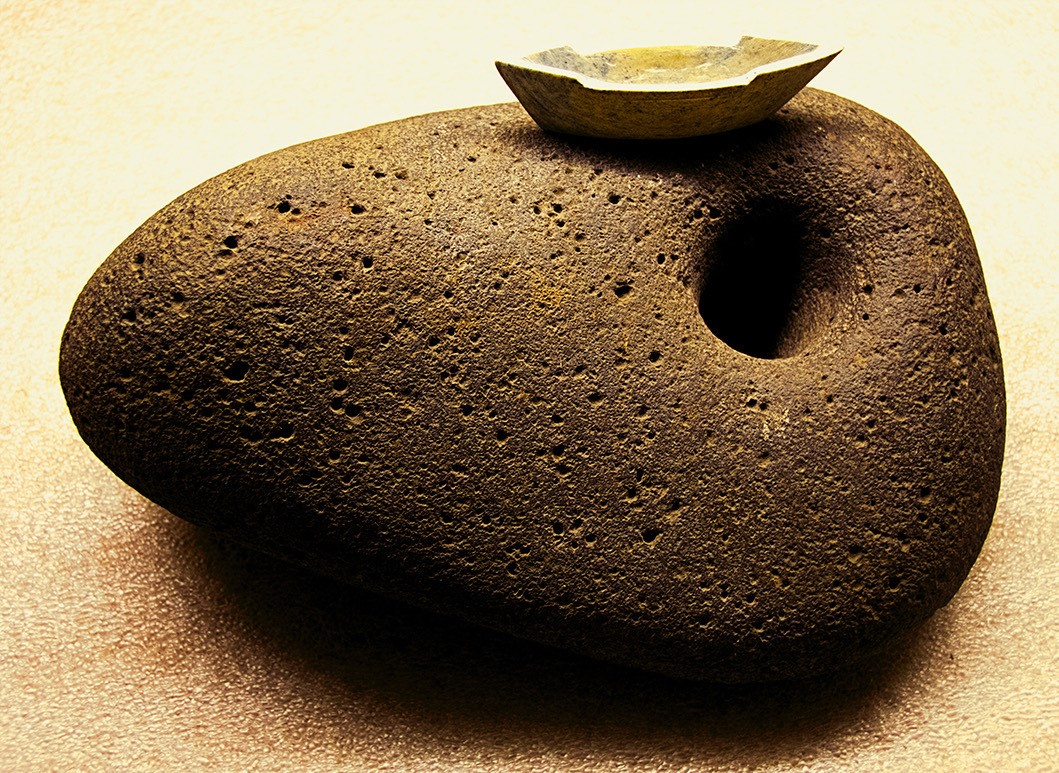
Food, Ecology: Past, Present, Future
Gathering and picking items from The Hearst’s collection that focuses on food and ecological practices, we explore the past, present, and future of Indigenous foodways.
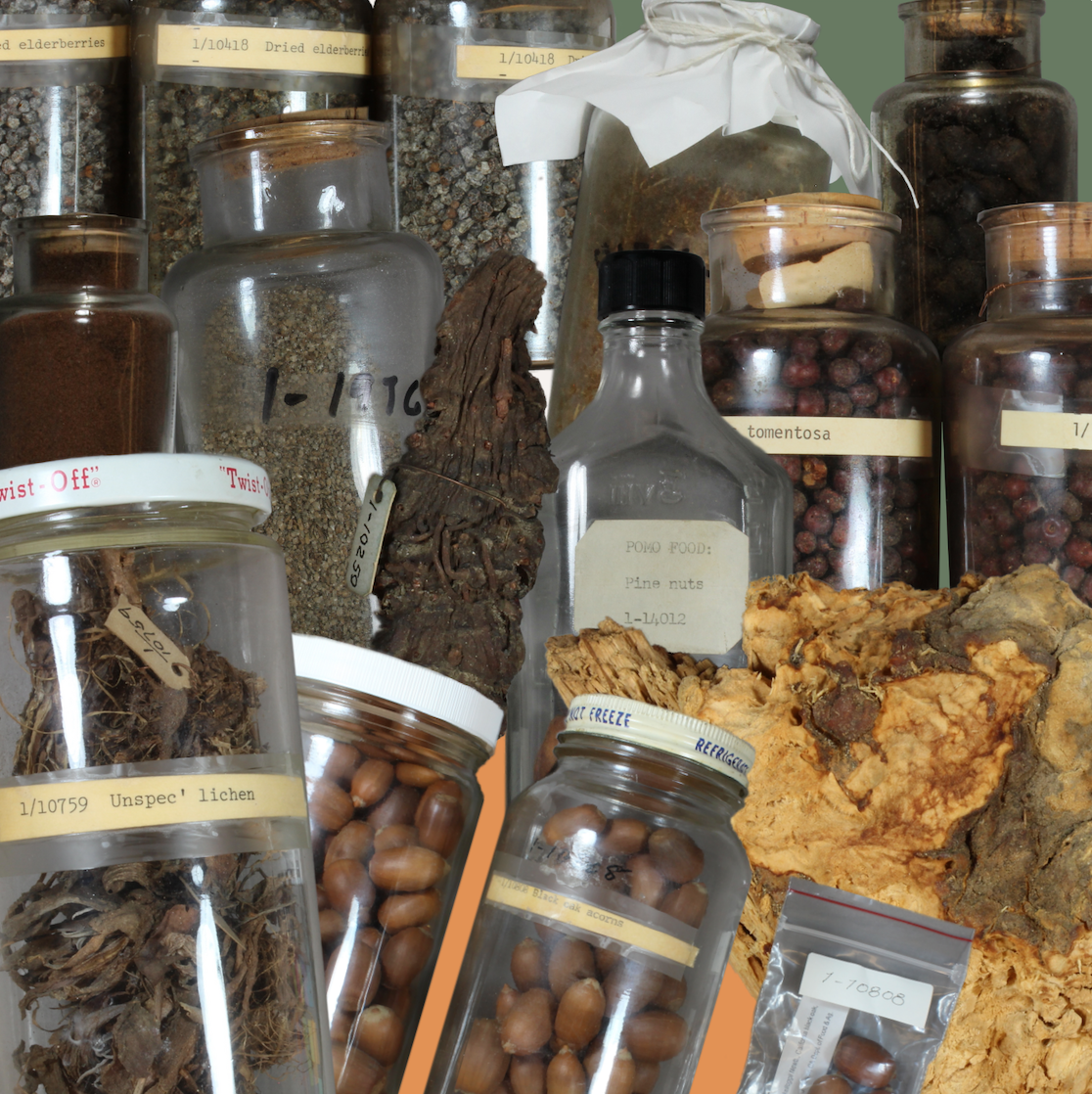
A Discussion of Restitution
During our class in Spring 2021, the Hearst Museum hosted Dan Hicks, the author of The Brutish Museums, for a panel discussion about his book, which argues for the restitution of cultural objects obtained through colonialism from anthropology museums across the globe.
The Brutish Museums: Benin Bronzes, Colonial Violence, and Cultural Restitution
Opportunities and Futures
We spent much of this class considering the possibilities for a better future in museum spaces. We read scholarship and researched experimental exhibitions to see how others are envisioning the direction of this monumental project of decolonization. Amy Lonetree mentioned earlier on this page, writes about the decolonization process as fundamentally based in addressing unresolved historical grief. It requires institutions to speak truth about colonialism and use the museum as a space to understand and heal its effects.
Dan Hicks also grapples with the long and ongoing role of museums in projecting colonial power. He envisions a better future for these spaces—one in which everything the museum owns is with the consent and collaboration of their origin communities. Hicks introduces an aspirational practice of necrography meaning the writing of loss. Colonial loot carries with it “the knowledge of human death and cultural extirpation,” so a new way to approach object learning in museum spaces could be to foster understanding of the histories behind their dislocation. When put in tandem with a commitment to tracing lines of ownership and returning objects to the source communities that request them, this practice of learning from objects through necrography proves crucial to imagining a decolonial future. It will require profound institutional honesty and reconciliation in order to facilitate the kind of healing we hope to create in these spaces.
In approaching this work, the perspective Puawai Cairns, Head of the taonga Māori collection at the Museum of New Zealand Te Papa Tongarewa, shares in Decolonization: we aren’t going to save you should be kept in mind. Crucially she writes “I don’t believe that decolonisation efforts should be diverted to merely redeem whiteness in museums.” To avoid this pitfall, to avoid the pursuit of these efforts only for the sake of performing antiracism as a form of self-soothing, Cairns reframes the dialogue of decolonization using the term reindiginization. In this sense, reimagining the Museum means not fixating on removing the colonial impact (because that is impossible) and instead, returning power to Indigenous people to construct their own sense of self and history.
Reimagining the museum will, thus, crucially require the centering of Native voices. An example of this in practice was the Apsáalooke Women and Warriors exhibition put on at Chicago’s Field Museum and the University of Chicago. In discussing their curatorial approach, they discussed how their “objects want to be seen,” and this presents an opportunity for museums to pursue. Alongside repatriation efforts, museum collections can be exhibited in collaboration with their origin communities, telling their own stories on their own terms.
The Carrying Our Ancestors Home (COAH) project founded by UCLA’s American Indian Studies Center in conjunction with the Fowler Museum is an example of earnest effort at repatriation and restitution. Their work is the product of extensive collaboration with Native American partners and academics in Southern California, which, again, highlights a crucial component of what makes up a good faith repatriation effort: the centering and empowering of Native communities. This is stressed across the board in dialogues around decolonizing the museum—NAGPRA compliance and repatriation more universally does not have to be and should not be a process mired by hostility and conflict. The onus is on institutions to work to construct productive and collaborative relationships with tribes and origin communities to facilitate this work. To do otherwise is to reproduce cycles of extraction both in the emotional and physical sense.
Learning from UCLA’s repatriation work is especially important given the stark differences in how these sister institutions (UCB and UCLA) have drastically different records on the matter. A 2020 California State Auditor’s report indicated that while UCLA has repatriated almost all artifacts and remains from its collections, Berkeley had “returned only about 20 percent.” The reason for this discrepancy reveals a larger problem of inadequate oversight and guidance across the UC system. A 2018 amendment to CalNAGPRA “required the university to create a policy for repatriation and establish systemwide and campus committees to review repatriation activity” but the UC’s initial attempts to execute this failed because they did not sufficiently integrate Native input. Along these same lines there exists a lack of adequate tribal representation on campus and in relevant committees, which is needed in order to establish a balance of perspectives on the issue of repatriation. Thus, in addition to broader reorientations, the future of museums like Hearst must begin with concrete steps like correcting these failures and following the example of programs like COAH.
Students can also be a part of this change. We can vocalize our opinions in the classroom and talk to faculty and administrators about how this is important and necessary. We can support projects that are attempting to address this, as listed in our section on decolonization. We can be the pressure that catalyzes change.
Our classwork centered on unpacking the ways in which the museum has been a participant in global colonialism and exploring more recent, alternative models. We learned moving forward requires intention, energy, and dedication to reshaping institutions, maybe decolonizing or reindiginizing them. Mindful of how objects taken under duress continue to inflict harm in the present, we reimagined a museum that curates, exhibits, and collects with care. Crucially, we see a better and more mindful museum working with the descendants of marginalized communities, moving forward by returning objects, ancestors, and knowledge, so that communities can tell their own stories on their own terms of the past, present and future.

